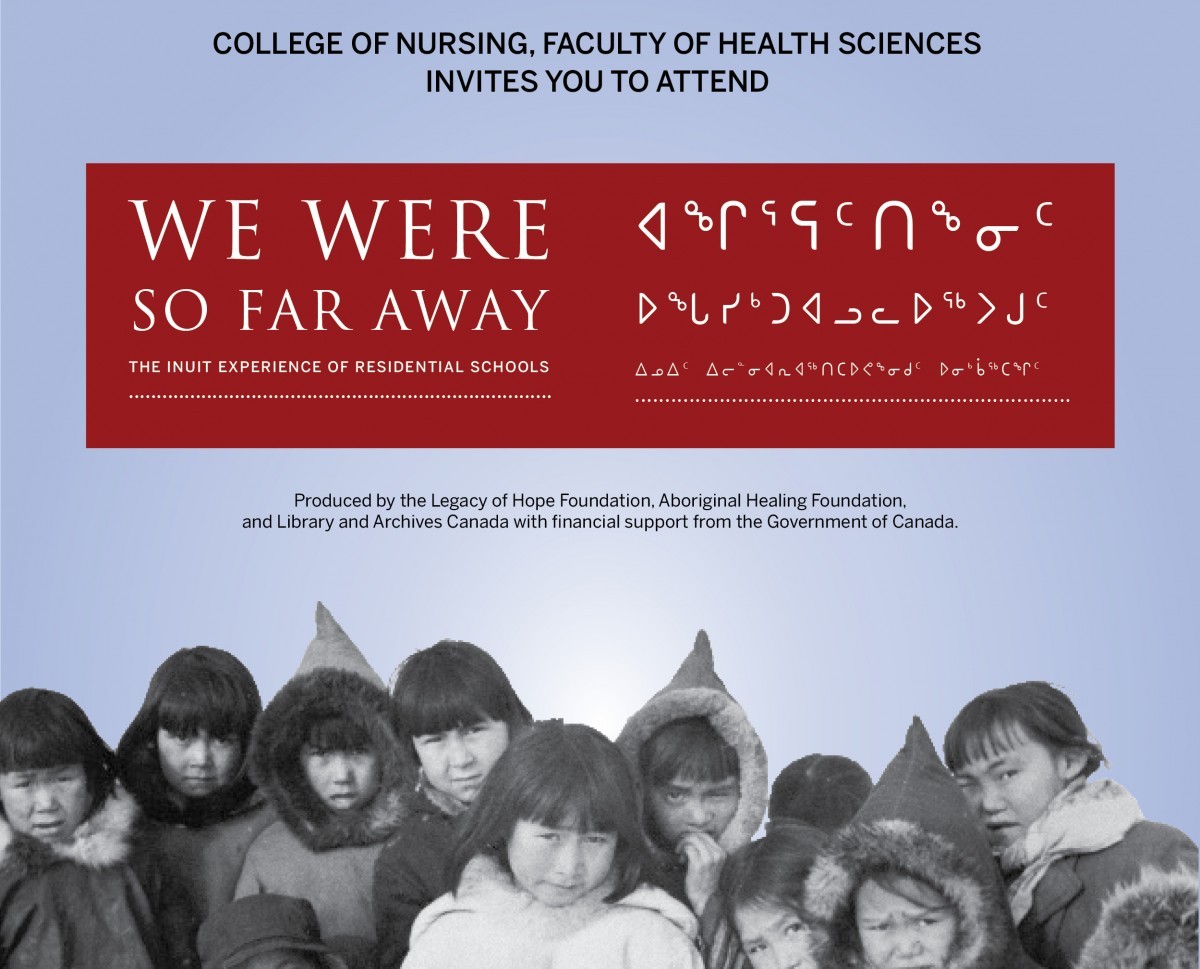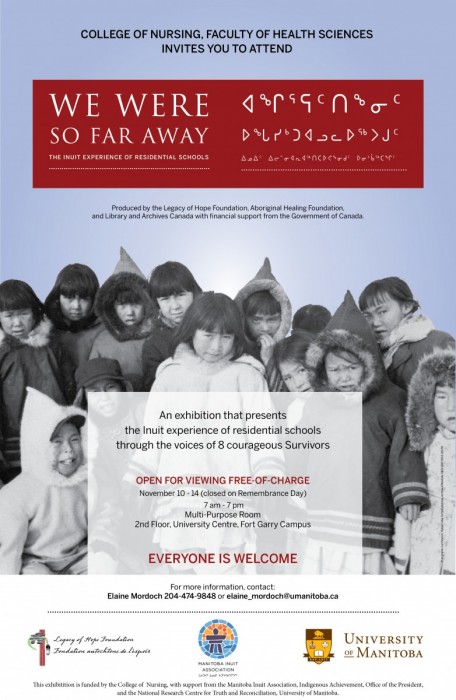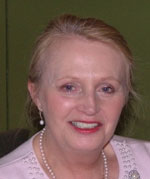
Image photographer: Len Peterson, Hudson’s Bay Company Archives, Archives of Manitoba, HBCA 1987/363-E-210/68.
Towards health care that sees the whole person: Inuit and Residential Schools exhibit opens
There’s momentum building around the idea of a holistic approach to health care, says associate professor in the College of Nursing, Elaine Mordoch. And she believes that’s a very good thing.
Mordoch and her nursing colleagues and exhibit organizers Donna Martin, Kendra Rieger, Crystal Cook and Cindy Van Eindhoven hope that the upcoming exhibition about Inuit survivors of residential schools will have a further impact on people’s attitudes. “We Were So Far Away: The Inuit Experience of Residential Schools” is being hosted by the College of Nursing, Faculty of Health Sciences, in collaboration with the Manitoba Inuit Association, National Research Center for Truth and Reconciliation (national archives hosted at U of M), and U of M’s Indigenous achievement — but it’s open to anyone in the general public. It runs from November 10 to 14.
UM Today asked Mordoch why it’s important for the College of Nursing to host this exhibit, which consists of poignant and powerful photographs and narratives of eight Inuit survivors of the residential schools system.
“I think it’s really important for new students to move beyond the biomedical model,” she says. Though she sees the biomedical model as equally important, “nursing conceptual models or frameworks have continually evolved to to include a holistic perspective of the person, beyond the physical, [looking at] the emotional, psychological, social and the spiritual, which has recently been noted.”
Mordoch says that this expanded view, which includes social, historical and cultural determinants of and attitudes towards health and wellness, is critical for nursing and health care professionals, where relationships are key.
Mordoch: An expanded view, which includes social, historical and cultural determinants of and attitudes towards health and wellness, is critical for nursing and health care professionals.
“The latest piece of that conversation is recognizing or acknowledging that historical events can and do effect the health outcomes that nurses are going to see — to help them to understand the many issues that complicate people’s lives and to draw attention to historical issues that also have an impact on the person and an inter-generational effect,” she explains.

Image photographer: Len Peterson, Hudson’s Bay Company Archives, Archives of Manitoba, HBCA 1987/363-E-210/68.
Mordoch cites Justice Murray Sinclair, the chairman of Canada’s Truth and Reconciliation Commission, who has advocated that all professions working with Aboriginal peoples undergo mandatory training on the Aboriginal experience in Canada, particularly in Western Canada where the population of Aboriginal people is significant. He’s said that every medical doctor and every nurse in this country in a training program at a hospital or university should be required to take a course on the residential school experience.
According to Mordoch, the exhibit provides “a neutral venue to discuss the long term effects of inter-generational trauma associated with residential schools and the colonization of all Aboriginal people — which continue to contribute to present health and social problems such as suicide, depression, post-traumatic stress and addictions issues as well as poverty, discouragement and alienation from cultural practices.”
She and her fellow exhibit organizers suggest that the exhibit fosters empathy and is “an artistic vehicle to bridge our understanding” through its revelation of emotional experiences that might otherwise remain hidden or buried — as well as throwing a spotlight on the resiliency, hope and determination of the Inuit as expressed in each survivor’s narrative.
Organizers say the exhibit is “an artistic vehicle to bridge our understanding” through its revelation of emotional experiences that might otherwise remain hidden or buried — as well as throwing a spotlight on the resiliency, hope and determination of the Inuit as expressed in each survivor’s narrative.
“Our students need to also acknowledge this part of the story within their nursing practice,” says Mordoch.
“An understanding of the residential schools experience … is an important step towards providing our students with knowledge to integrate into culturally competent care.”
The exhibit engages nursing and other student-viewers with brief forms asking about the viewer’s experience of the exhibition.
“The arts create a space for meaningful reflection,” as the organizers put it.
“Students reflect on the artistic presentation of people’s experiences, and this process results in the critique of current practice and the co-creation of new knowledge — thus impacting the thoughts and future actions of participants.”
“We Were So Far Away: The Inuit Experience of Residential Schools” opens on Monday, November 10 at 10:30 a.m. and runs November 10 and 12 to 14 in the Multi-Purpose Room on the 2nd Floor of University Centre. It is free and open for viewing from 7:00 a.m. to 7:00 p.m. daily.
—







